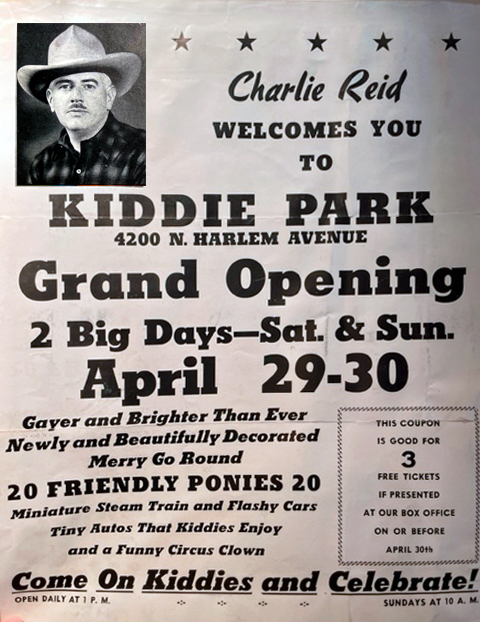Kiddy Park opened on April 29, 1939, at 4200 North Harlem Avenue, Chicago, by Charles “Charlie” F Reid.
sidebar
In 1948, a local improvement association incorporated Norridge as a village, stymieing an effort by Chicago to annex the area.
On the same corner as KiddyTown Amusement Park (1953-1964), which opened on the east side of the future Harlem Irving Shopping Center, which opened in 1955, in Norridge, Illinois.
Charlie was quite the entrepreneur, opening the Charlie Reid Golf Circus just to the north of Kiddie Park. Soon after starting Kiddy Park, he branded himself as Montana Charlie and started a few businesses and sold some products under that brand.
Charlie Reid Golf Circus
If Daddy and Mother wish for recreation, they may visit the Charlie Reid Golf Circus, where they can practice their Golf in surroundings so unusual that every minute will be real joy and pleasure.
They may improve their Golf by aiming at animals─try, hitting the Elephant on the "noodle" at 250 yards─the Lion at 200 yards─they can try and hit a Tiger or a Clown─and all the time, they are improving their golf drive and having fun while they do it.
Compiled by Dr. Neil Gale, Ph.D.
Thank you, France Costabile, for the pictures and your story.











